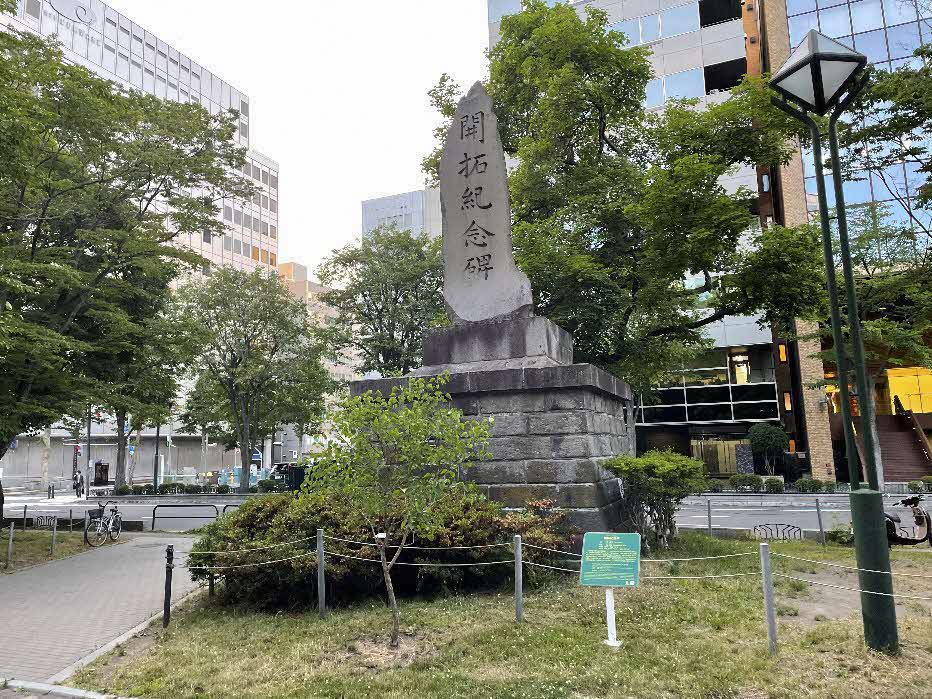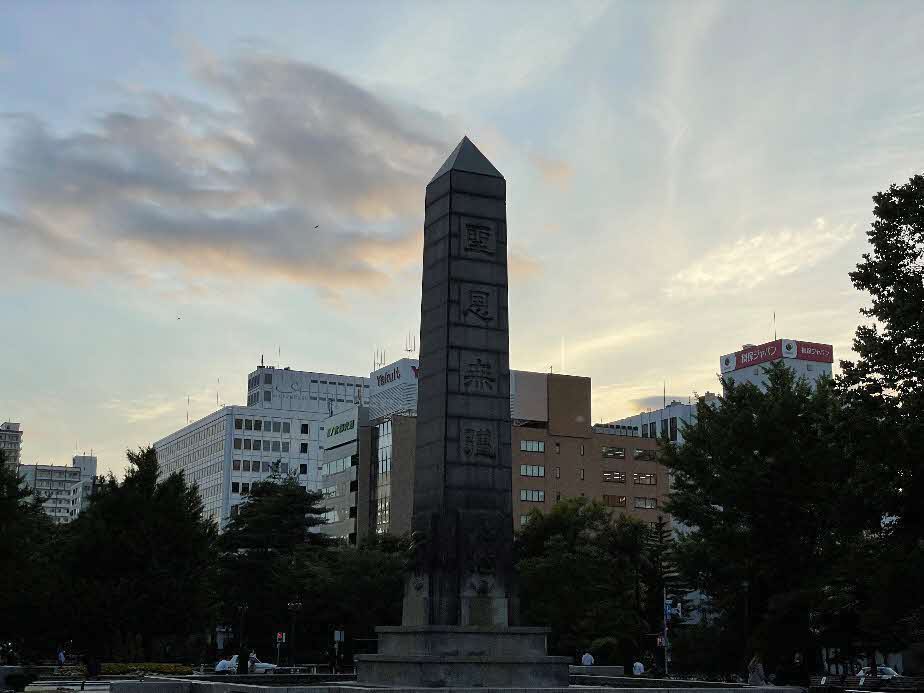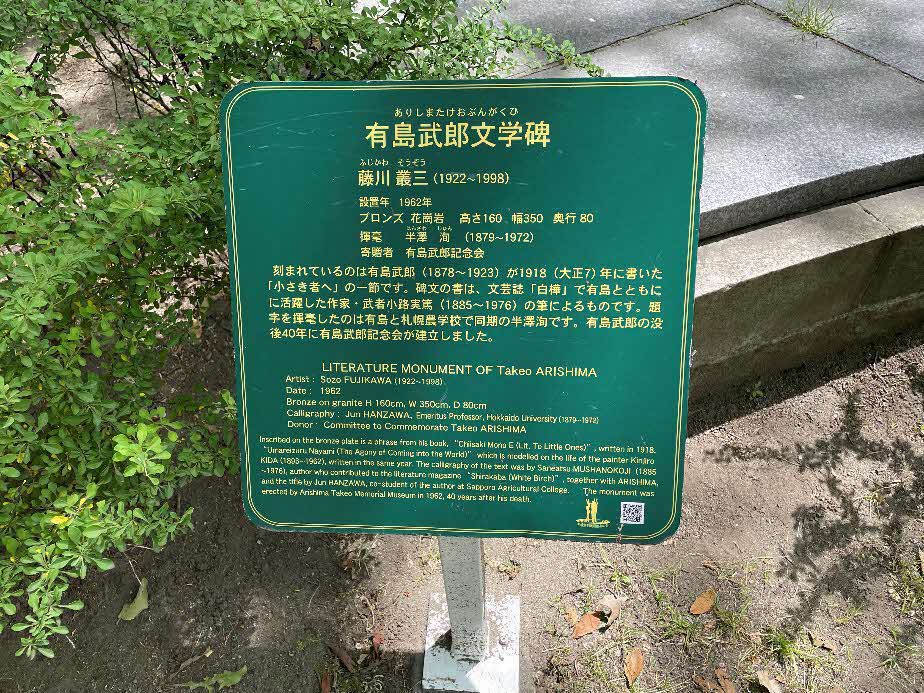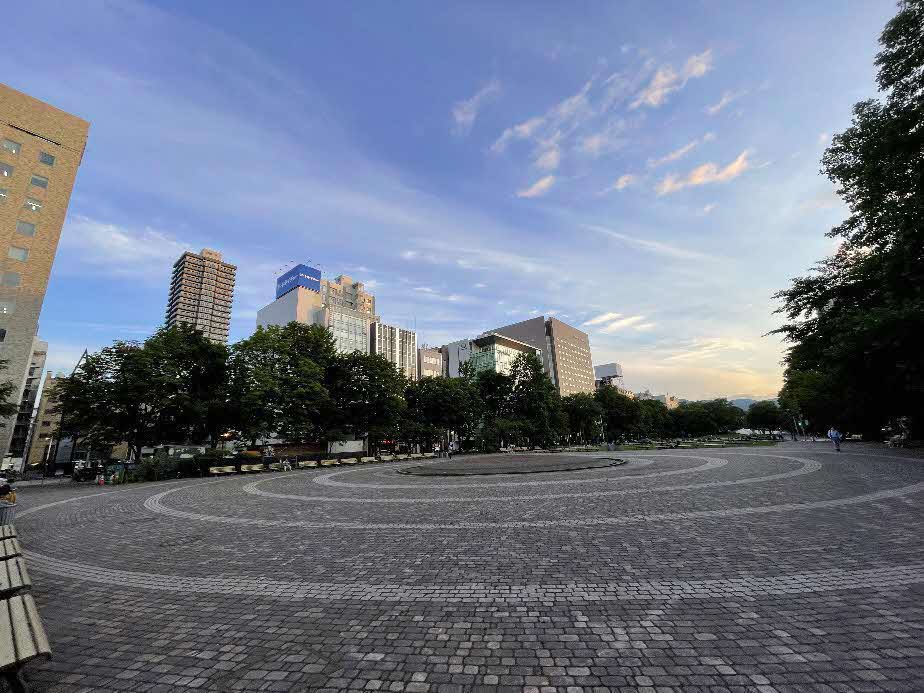Odori Park Monument/Toshiki Nakajima, a second-year student, Faculty of Business Administration, Sapporo Gakuin University
2-chome, Odori Nishi, Chuo-ku, Sapporo City
*Interviewed in June,2021
Monuments built in Odori Park
It is said that 10 monuments are built in Odori Park between Odori Station and Nishi 11-chome Station, the starting point of the marathon. The oldest one was built in 1909, and there are monuments towering majestically, and there are various sizes, shapes, and places built, such as monuments quietly erected in the shade of trees in the park.
Found or hidden monuments
The photo below is called the Monument in the center of Odori Nishi 5-chome, and the height is 16.4m, and it can be found quite far away from the overwhelming presence. The letters engraved on the monument are read as “Seionmukyo”, and the emperor’s kindness means that there is no limit. In contrast to this size, there is a very small monument about 50 cm high and 70 cm wide, and there are also some that are decorated with copper plates embedded in the ground, although they are not small, such as the site monument of the beginning of telephone exchange. In this way, you can enjoy monument hunting while learning the history, from what is easy to find to the hard to find.
History of Sapporo at the Monument
In the early Meiji period, there was a wide road on the border where Odori Park was located, with the northern half of sapporo city in the government district and the southern half as the common people’s district. After that, it was widened as a large square (fire prevention line) that has the role of fire prevention to prevent the spread of fire, and this is the beginning of Odori Park. The history of the oldest monument, the PioneerIng Monument, is even older than Odori Park and is considered to be the oldest monument in Sapporo. When the kagyo envoy established in 1877 was abolished in 1880 and shifted to the three prefectures of Hakodate, Sapporo, and Nemuro Prefecture, the installation was established, and it was built in Kairakuen (Kita-jo Nishi 7-chome) in Kita-ku, Sapporo City in 1887. After that, it was moved to Odori Park, which was a plaza at that time in 1909, and continues to this day. In this way, near each monument installed in commemoration of various events, commentary is described as shown in the photo, and you can trace the history of Sapporo just by taking a walk in Odori Park. For more detailed history, you can also look up the history at the Sapporo Archives (Minami 8-jo Nishi 2-chome) closest to Toyosui Sukino Station, one station on the Municipal Subway Toho Line, and you can deepen your learning in search of monuments.
The start of the marathon course is the first step in knowing the history
From the start of the marathon, we will see off the marathon runners who started various monuments, including the monument. Although there are few monuments that are colored or conspicuous like tourist resources, it is a symbol of the era created with great pains to keep people at that time telling future generations as a memorable event. When visiting Sapporo, which was the stage of the Olympics, I would like you to look for as many monuments built throughout the place, including Odori Park, and learn about the history of the development of Hokkaido. You will be impressed to find that this cityscape, which has led to the running through the world’s athletes as a marathon course, is supported by various history.